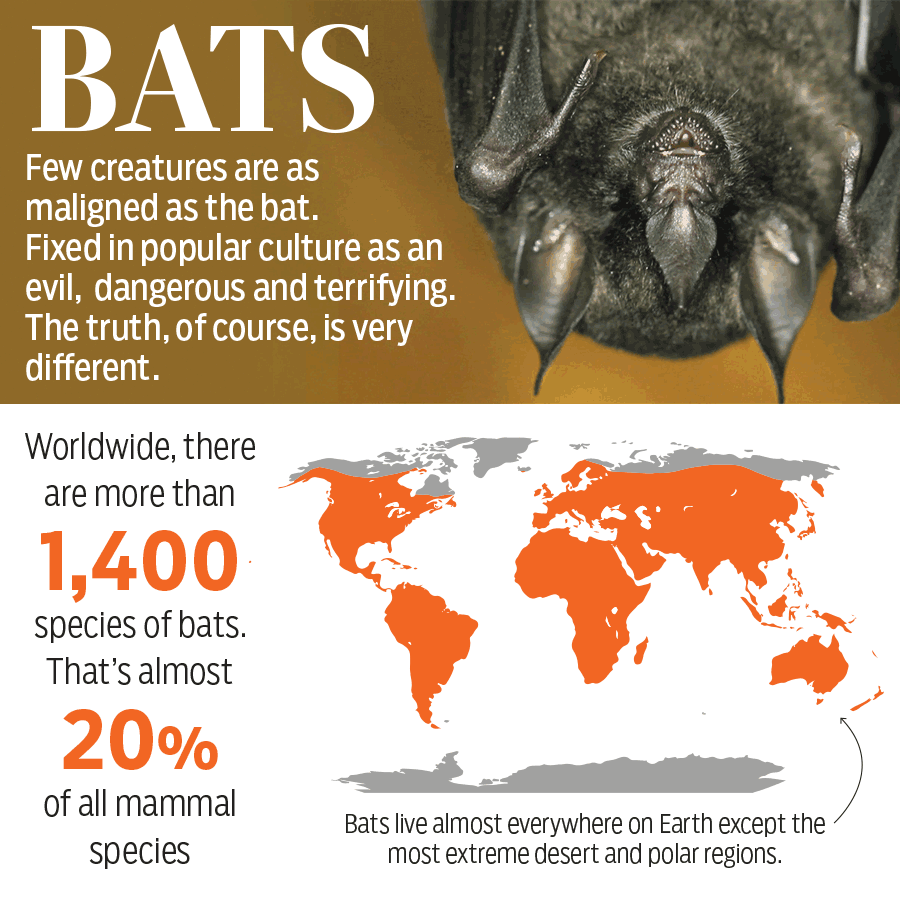Social distancing is a really simple infection-avoidance mechanism. And it's not just for man. Bats practice it too, perhaps for the longest time. But it's only now that evidence has emerged about this fascinating phenomenon practised by bats and other insects. Scientists have confirmed it in a study.
READ MORE
It turns out that even in animals, there exists a simple mechanism for reducing disease transmission. It's so simple yet so effective. When the infected animals show sickness behaviour through increased lethargy and sleep, which effectively reduces their movement and "sociality", it then helps them practise a form of social isolation and "distancing".
The research was published in the journal Behavioral Ecology on Tuesday, October 27, 2020. For the study, researchers captured 31 adult female vampire bats from a roost inside a hollow tree at Lamanai, Belize.
Sickness behaviour
Researchers created a social network from high-resolution proximity data in order to better understand the impact of sickness behaviour on relationships over time. The researchers then captured a random chunk of bats and made them "sick", by injecting them with lipopolysaccharide, an immune-challenging substance. The rest of the bats, which belonged to the control group, were given saline (placebo) injections.
Proximity sensors were then glued to these bats for the next three days, following which they were released back into their hollow tree.
Data collection
Data on the bats' behaviour was transmitted to scientists by custom-made "backpack" chips glued to the animals' backs, recording the vampire bats' social encounters.

"The sensors gave us an amazing new window into how the social behaviour of these bats changed from hour to hour and even minute to minute during the course of the day and night, even while they are hidden in the darkness of a hollow tree," the study authors wrote.
Changes in behaviour
The changes in behaviour and meetings were recorded for 16 "ill" bats and 15 healthy bats under natural conditions. After tracking the data, it was seen that the bats that felt "ill" spent relatively lesser time with other bats.
The researchers noted that the ill bats were less "sociable" compared to healthy fellow bats — both directly and indirectly. During the six-hour treatment period of the sick bats, it was seen that they, on average, had four lesser associates when compared to the control bats.
On average, the probability of a control bat associating with another control bat was 49%, while the same associating with an "ill" bat was only 35%. Even during the treatment period, bats that were “ill” spent 25 minutes lesser connecting per partner when compared to control bats. After the treatment period was over, these differences diminished when the bats slept or foraged outside the roost.
What does this mean?
Researchers stated that as the bat saw a disease spreading across their population, they changed their behaviour — a biological adaptation that can slow down the rate of a disease’s transmission. In the midst of the pandemic, a similar shared social behaviour alteration had been mandated in humans over the past few months.
For animals, empirical evidence of social distance was limited prior to the current study. Now, this study shows that even social distancing in animals is wired into their being, as a matter of self-preservation. So while sick bats self-isolate, there's also evidence that lobsters, monkeys and fish avoid other ill animals. For these animals, there's no need for public health advisory or disincentives, like fines. It's just common sense.
from World,Europe,Asia,India,Pakistan,Philipines,Oceania,Americas,Africa Feed https://ift.tt/2TC1ti4
No comments:
Post a Comment